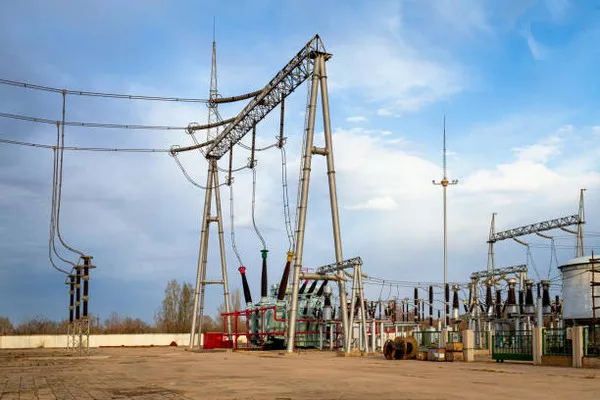In the realm of electrical engineering, few inventions hold as much significance as the electrical transformer. This unassuming device plays a pivotal role in the efficient and safe distribution of electricity across vast networks, enabling the seamless transmission of power from generators to end-users. With its ability to step up or step down voltage levels while maintaining the integrity of the alternating current (AC), the transformer stands as a testament to engineering innovation and remains an essential component of modern power systems.
Principle of Operation: Flux and Faraday’s Law
At its core, the operation of an electrical transformer is rooted in electromagnetic induction, a fundamental principle discovered by Michael Faraday in the early 19th century. This phenomenon occurs when a changing magnetic field induces an electromotive force (EMF) in a nearby conductor. In the context of transformers, two coils of wire – the primary and secondary coils – are wound around a common ferromagnetic core.
When an alternating current flows through the primary coil, it generates a constantly changing magnetic field around the core. This magnetic field then penetrates the turns of the secondary coil, inducing a voltage across its terminals. The magnitude of the induced voltage is directly proportional to the ratio of the number of turns in the secondary coil to the number of turns in the primary coil, a relationship known as the turns ratio. By adjusting the turns ratio, transformers can step up or step down the voltage level of the AC signal, providing the foundation for their diverse applications.
Construction and Components
The construction of an electrical transformer is meticulous, aimed at optimizing its efficiency and reliability. The ferromagnetic core, typically made of laminated steel, serves as the conduit for the magnetic flux generated by the primary winding. The laminated construction minimizes eddy current losses that can occur in solid cores. The primary and secondary coils, wound from insulated copper or aluminum wire, ensure proper coupling of magnetic flux between the coils.
To prevent energy losses due to eddy currents and hysteresis, which result in heat generation within the core material, the transformer core is often designed in a shape that minimizes the path length of the magnetic field lines. Additionally, the core material itself is chosen for its high magnetic permeability and low coercivity, enhancing the transformer’s overall efficiency.
Step-Up and Step-Down Transformers
Transformers are categorized based on their intended voltage transformation – step up or step down. A step-up transformer increases the input voltage to a higher level at the secondary coil, while a step-down transformer decreases the input voltage. This fundamental ability to adjust voltage levels without altering the frequency of the AC signal underpins the versatility of transformers in power distribution, industrial processes, and electronic devices.
Efficiency and Losses
Efficiency is a critical factor in transformer design, as energy losses can result in operational inefficiencies and increased maintenance costs. Transformers experience several types of losses, including:
Copper Losses: These losses, also known as I²R losses, occur due to the resistance of the wire in the coils. As current flows through the windings, some energy is converted into heat due to the resistance of the wire material.
Iron Losses: Iron losses, comprising hysteresis and eddy current losses, stem from the energy dissipated in the core material as it undergoes rapid magnetization and demagnetization cycles. Laminating the core reduces eddy current losses, while selecting materials with favorable hysteresis characteristics helps minimize this form of loss.
Stray Losses: Stray losses arise from the leakage of magnetic flux between the windings, leading to energy losses. Proper winding geometry and insulation techniques help mitigate stray losses.
Load Losses: Load losses occur when the transformer supplies power to connected devices. These losses are influenced by the current flowing through the transformer and are predominantly due to copper losses.
Efforts to enhance transformer efficiency involve a delicate balance between optimizing the core material, selecting appropriate winding materials, and employing innovative cooling techniques.
Cooling and Maintenance
As transformers operate, they generate heat due to energy losses. If not managed properly, excessive heat can degrade insulation materials and lead to premature failure. To combat this, transformers employ various cooling methods. Small transformers often rely on natural convection, while larger units incorporate forced air, oil, or water cooling systems. Oil-cooled transformers, for instance, immerse the core and windings in oil, which not only provides cooling but also acts as an insulating medium.
Routine maintenance is crucial to ensuring transformer longevity and performance. This includes regular inspections, oil quality assessments (for oil-cooled transformers), and addressing any issues that may arise over time.
Applications Across Industries
Transformers play an indispensable role in numerous sectors:
Power Transmission and Distribution: In the electrical grid, transformers step up generated electricity to high voltage levels for efficient long-distance transmission and then step it down again for distribution to households and industries.
Industrial Processes: Industries often use transformers to power heavy machinery, providing the appropriate voltage levels needed for various processes.
Residential and Commercial Use: Step-down transformers provide safe and usable voltage levels for homes and businesses, ensuring compatibility with appliances and devices.
Renewable Energy Integration: Transformers facilitate the integration of renewable energy sources, such as wind and solar, into the grid by adjusting the generated voltage to match the existing infrastructure.
Railways and Transportation: Transformers power electric trains by converting the overhead line voltage to levels suitable for train operation.
Conclusion
The electrical transformer, while unassuming in appearance, is a technological marvel that underpins the modern world’s electrical infrastructure. Its fundamental principle of electromagnetic induction, coupled with meticulous engineering in construction and maintenance, enables efficient and safe power distribution across industries and geographical boundaries. As our reliance on electricity continues to grow, the transformer’s role in ensuring seamless power transmission remains as crucial as ever.

